The blind men and the elephant, FPBAC 17:3, Special Collections
50 Features of Special Collections: The Blind Men and the Elephant
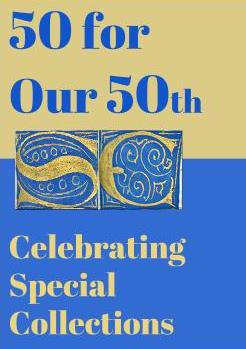
What comes to mind when you think of a book? What are the typical parts of a book? How about the purpose of a book? The parts that go into forming a book usually consist of the covers, pages, text, binding, and its spine. When you consider elements of art, you may think of color, line, shape, form, space, and texture.
Artists’ books are works of art that use elements of the traditional book form in combination with elements of art. Together these different elements encourage readers and the audience to reflect on relationships between image, form, and text; they also prompt the re-imagining of the reception of text. If the work is the physical object represented by the book, which is tangible and can be held in your hands or occupy a space on a shelf, then the text is what is experienced and interpreted through the activity of reading. The text is fluid and shaped by the reader’s knowledge, personal experiences and opinions. What happens to interpretation when in an artist’s book everything from the materials used to the presentation of text (its design and placement on a page), along with the shape and format of the book, are all meant to help convey the meaning of the artist’s book? Reading the text alone isn’t enough to grasp the full meaning of the artist’s book – not without also reflecting on its shape, format, and the artwork. These elements help to complement and augment each other.
The artist’s book we’ll focus on comes from our Fine Press and Book Arts Collection, The Blind Men and the Elephant: the Indian Legend as a Poem. It is based on an Indian parable that was introduced to the west as a poem by American poet, John Godfrey Saxe (1816–1887). In the story, blind men are led to an elephant to describe what it feels like. Each blind man gets to feel a single, different part of the elephant:
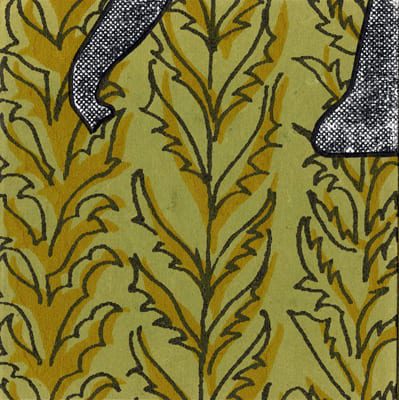


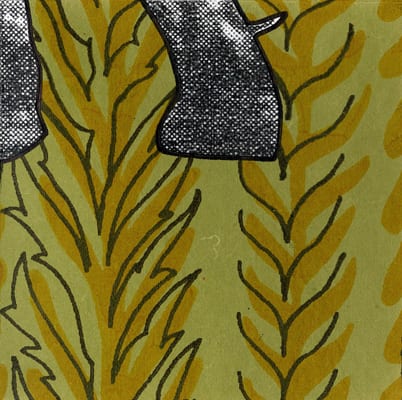
After comparing their thoughts on the touch and feel of the elephant, the blind men realize that they are at odds with each other. For example, if touching the elephant’s tail, which might feel like a rope with hair on one end, how can the elephant also feel solid, smooth, and pointy like the tusk? If touching one of the elephant’s legs, it will certainly feel different than touching its belly. Who is telling the absolute truth in this situation? While an individual’s experience can be true, we should make sure that we’re not limited by our own experiences and consider the experiences of others.
There are two pieces to this artist’s book. The first piece is a codex of Saxe’s poem and the second is a maze book with an illustration of an elephant. Both pieces are held together by a wraparound tie that looks like an elephant’s tail while the covers are made of crumple-textured paper dyed to resemble elephant hide:
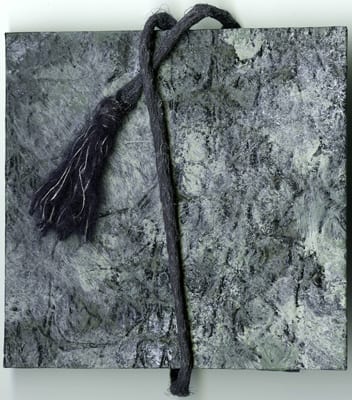
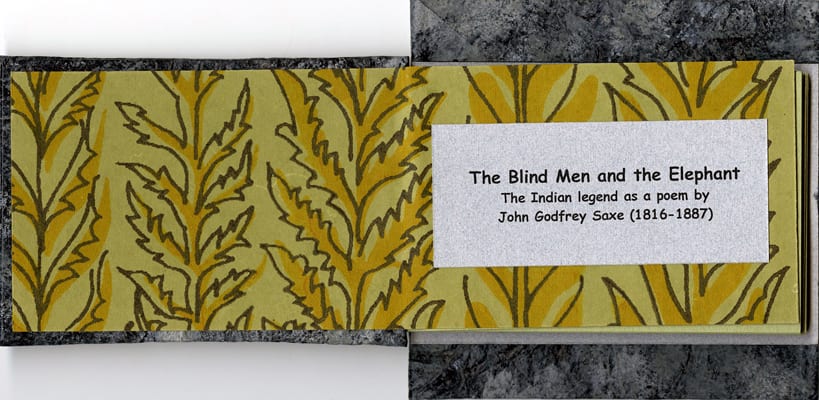
To see all the parts come together to complete the full elephant, visit Special Collections in Shields Library.
Work referenced:
Saxe, John Godfrey, 1816-1887. Trujillo, Rae. The Blind Men and the Elephant: the Indian Legend as a Poem. Pleasant Hill, Calif.: Rae’s of Sun, 2009.